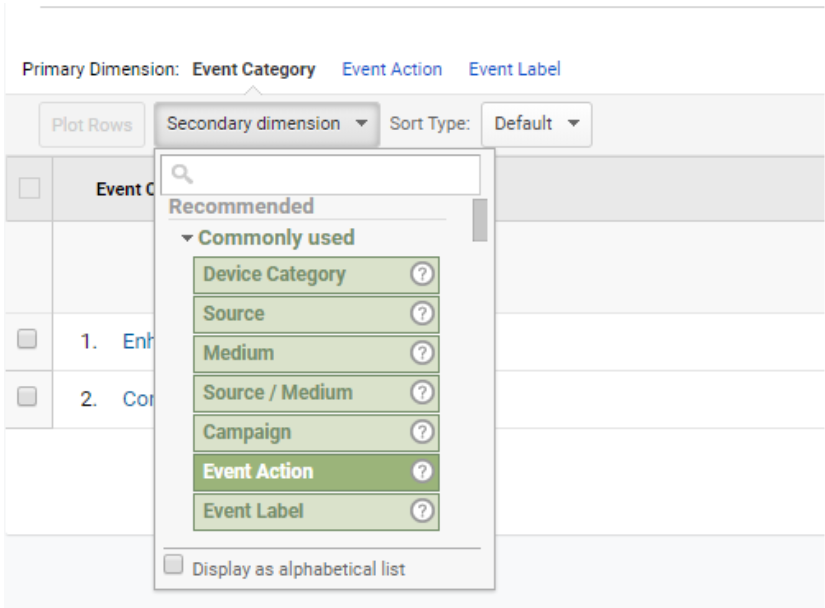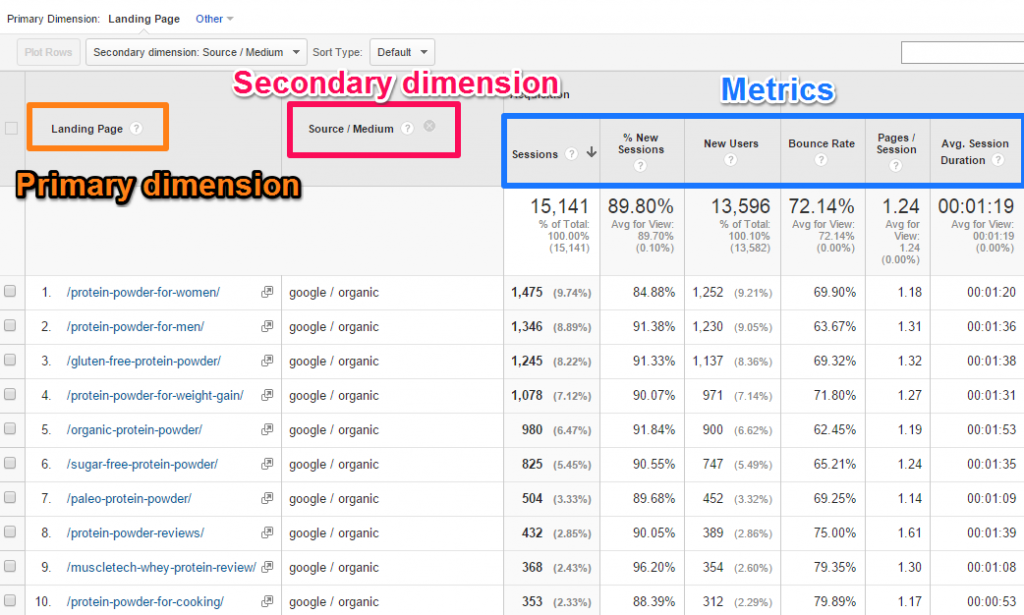Comprehensive Insights Using Secondary Dimension in Google Analytics
Enhance Your Data Analysis Using Additional Dimension in Google Analytics
Discovering the capabilities of additional measurements in Google Analytics opens a realm of possibilities for refining information analysis. By layering added dimensions onto main information sets, a more complex narrative emerges, dropping light on individual interactions and efficiency signs.
Comprehending Additional Measurements
Secondary dimensions in Google Analytics refer to added specifications that can be included to the main measurement, allowing for a much more thorough evaluation of data (Secondary Dimension in Google Analytics). By integrating additional dimensions, experts can sector and filter information to discover patterns, patterns, and correlations that may not be apparent when looking at the information as a whole.

Advantages of Utilizing Second Dimensions
When evaluating information in Google Analytics, the utilization of second dimensions offers invaluable understandings right into individual actions and performance metrics. By adding an additional dimension to your primary information, you can dig deeper right into the attributes of your website visitors and their interactions.
Additionally, additional dimensions assist in identifying patterns and correlations that might not be promptly obvious when taking a look at the information alone. This deeper level of evaluation can discover beneficial information that can lead advertising and marketing strategies, site optimization, and overall organization choices. In addition, second measurements boost the context of your main information, giving a more detailed sight of user interaction and performance metrics. In general, making use of additional measurements in Google Analytics can significantly boost the deepness and top quality of your information analysis, leading to more informed decision-making and boosted end results.
Exactly How to Include Second Dimensions
By integrating second dimensions in Google Analytics, users can get much deeper understandings right into their information analysis process, enabling even more detailed analysis of individual habits and performance metrics. Adding secondary measurements is a simple process that can significantly boost the deepness of evaluation. To include a secondary measurement in Google Analytics, start by navigating to the report you wish to examine. As soon as in the report, locate the "Secondary measurement" tab over the information table. Click it to disclose a dropdown menu with different alternatives such as Habits, Technology, and Customized Dimensions. Select the dimension you intend to include, such as 'Source/Medium' or 'Gadget Category'. This additional measurement will after that be put on your existing data, offering additional context and permitting for a more comprehensive analysis of user communications. By utilizing second measurements efficiently, customers can discover beneficial understandings that Read More Here might have or else been overlooked, resulting in notified decision-making and boosted efficiency techniques.
Studying Data With Additional Dimensions
Using second dimensions in data evaluation offers a more comprehensive understanding of user behavior and efficiency metrics. By including a second dimension to your primary information embeded in Google Analytics, you can dig much deeper into the characteristics of your site visitors and their communications. Combining the key measurement of 'source/medium' with the second dimension of 'touchdown web page' can reveal which specific pages are bring in web traffic from different resources, helping you optimize these pages for better engagement.

Basically, examining data with secondary dimensions encourages you to get valuable understandings right into customer actions, determine patterns, and make educated decisions to improve the efficiency of your electronic residential properties.
Best Practices for Secondary Dimensions
In data evaluation, integrating additional measurements successfully can dramatically improve the deepness of understandings derived from metrics and customer behavior patterns. When utilizing secondary measurements in Google Analytics or any kind of various other analytical device, it is important to follow best methods to make certain the accuracy and significance of the information evaluation.
One secret ideal technique is to meticulously choose additional dimensions that match the primary measurement being examined. Picking additional measurements that provide additional context or further division can use an extra detailed understanding of the information. It is also necessary to avoid overcomplicating the analysis by including a lot of secondary dimensions, which may result in complication or dilution of insights.
Furthermore, it is suggested to try out different mixes of secondary and primary measurements to discover new connections and trends. Routinely improving the choice and assessing of secondary measurements based upon the particular goals of the analysis can lead to more actionable insights. By complying with these ideal methods, information analysts can utilize additional dimensions properly to improve the overall data evaluation procedure and decision-making capabilities.

Verdict
In conclusion, incorporating second measurements in Google Analytics is essential for a comprehensive information evaluation method. By leveraging second measurements along with key ones, marketing professionals and experts can uncover beneficial understandings my company and correlations that can inform decision-making and enhance electronic advertising and marketing techniques. Understanding just how to successfully make use of secondary dimensions and adhering to best practices will allow professionals to remove meaningful data and improve their general efficiency metrics.
Secondary measurements in Google Analytics refer to additional parameters that can be included to the key dimension, enabling for an extra in-depth analysis of information. By integrating additional dimensions, experts can section and filter information to reveal patterns, trends, and relationships that could not be obvious when looking at the information as a whole. Incorporating the primary dimension of 'source/medium' with the additional measurement of 'touchdown web page' can reveal which details pages are drawing in web traffic from different resources, helping you optimize these web pages for much better involvement.
One secret finest method is to thoroughly pick second measurements that complement the key dimension being analyzed. By complying with these ideal methods, information experts can utilize second measurements successfully to improve the overall information evaluation Full Article process and decision-making capabilities.